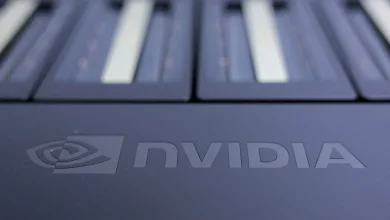Uncommon Knowledge: What a Russian AI Robot Says about Elon Musk and China

The video is slapstick perfection: a humanoid called AIdol staggers onto a Moscow stage to the Rocky theme, wobbles, waves—and promptly face-plants as handlers rush in with a black sheet. The clip went viral within hours. Its team blamed “calibration issues.” The symbolism is too neat to resist. Russia, punch-drunk on techno-nationalism, is playing catch-up, a week after America’s most controversial CEO was doing the robot dance in Austin—and asking investors for $1 trillion to finance an embodied-AI revolution. Elon Musk’s pitch is simple: pay him like a once-in-history founder so he can build once-in-history robots. Shareholders said yes.
China, meanwhile, is not waiting for applause; it’s deadly serious. It’s throwing subsidies, tenders, and supply chains at humanoids, even promising to sell some for about the price of a used compact car. The slapstick in Moscow is a sideshow. The main event is a contest over how the West, and especially the U.S., will compete with a state-directed Chinese push into “embodied AI.”
Common Knowledge
Progressives see plutocracy in Musk’s pay. “No CEO is worth a trillion-dollar pay package,” said Emma Ruby-Sachs of the advocacy group Ekō as unions warned against the plan.
Corporate-governance critics add that the issue is stewardship, not just size. “Calling Musk distracted from his work at Tesla would be an understatement,” argued Bartlett Naylor of Public Citizen, which urged investors to vote no.
Senator Bernie Sanders was blunter: the award is “oligarchy.”
On the pro-Musk side, markets-first analysts framed the vote as a necessary bet on embodied AI. Wedbush’s Dan Ives called the approval a “bright green light,” and CNBC’s Jim Cramer backed the move.
Tesla chair Robyn Denholm’s defense was the pure incentive argument: the award exists to push Musk to do “impossible things.”
And, crucially, a large majority of shareholders agreed: more than 75 percent voted yes.
Uncommon Knowledge
The fine print matters. On November 6, Tesla shareholders approved a performance-only award for Musk that could be worth up to $1 trillion by roughly 2035—but only if the company hits towering milestones. These include: lifting Tesla’s market value toward $8.5 trillion, shipping 20 million EVs annually, and fielding one million robotaxis and one million Optimus humanoids. Musk, for his part, insisted Optimus could help “eliminate poverty” and deliver “sustainable abundance.” America is attempting to beat an industrial policy with a capitalist incentive.
China, by contrast, is using the old-fashioned tools of state power—and doing it at speed. In a review of hundreds of public tenders, Reuters found that state procurement alone for humanoids and related tech jumped from around $700,000 in 2023 to around $30 million in 2024—a 45-fold leap in a single year—alongside more than $20 billion in subsidies flowing to the sector. The details are startling: some entry-level units listed at $13,000. Morgan Stanley counts 36 new Chinese humanoid models introduced in 2024, versus 8 in the U.S., and the consensus forecast in these reports points to 1 million humanoids sold annually by 2030. This is what an industrial machine looks like.
The deployments are beginning to match the promises. UBTech says its Walker S1 is now trialing on an Audi-FAW line in Changchun. Shanghai’s Fourier Intelligence says it has already shipped 100+ GR-1 units as it ramps production.
Beneath the humanoid headlines sit the broader automation foundations. China has accounted for roughly half of global industrial-robot installations in recent years and has raced up the robot-density tables (robots per 10,000 manufacturing workers), according to the International Federation of Robotics.
Now line up the American wager against those facts. The shareholder vote doesn’t hand Musk a bag of cash; it hands him a contingent prize. However, costs remain the hinge. Musk and tech media have floated an Optimus target price in the $20–30k range, which would push the unit firmly into capital-equipment territory. For context, U.S. production workers averaged about $30 an hour in 2025—a number humanoids don’t have to beat on raw pay alone if they run nights, weekends, and without sick days (maintenance and downtime remain wildcards).
Which brings us back to that Russian robot. The clip earned its clicks, but the slapstick is irrelevant to who wins. The contest is between a trillion-dollar incentives contract aimed at making humanoids economically inevitable, and a trillion-yuan procurement machine already buying them. On current evidence, China has the head start. Tesla’s answer is to concentrate capital and focus in a single, massively motivated founder. That’s a bigger punchline than a punch-drunk Russian robot.





